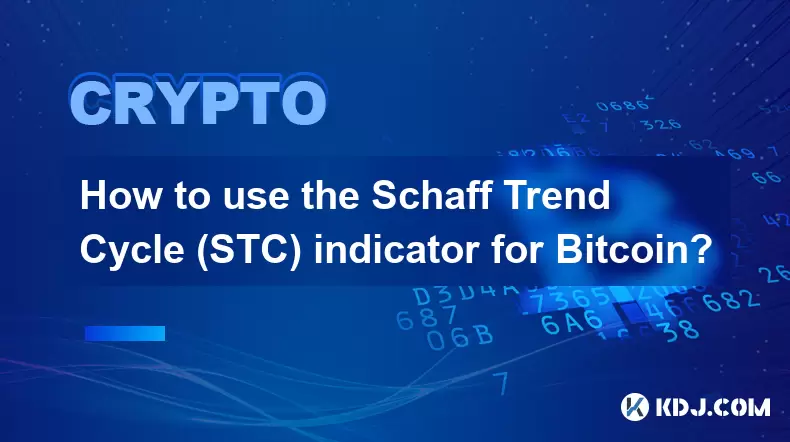-
 Bitcoin
Bitcoin $111300
-0.83% -
 Ethereum
Ethereum $4296
-0.28% -
 XRP
XRP $2.970
-0.28% -
 Tether USDt
Tether USDt $0.0000
0.01% -
 BNB
BNB $876.7
-0.13% -
 Solana
Solana $216.7
0.50% -
 USDC
USDC $0.9998
0.01% -
 Dogecoin
Dogecoin $0.2424
1.50% -
 TRON
TRON $0.3345
0.88% -
 Cardano
Cardano $0.8635
0.03% -
 Hyperliquid
Hyperliquid $53.38
5.54% -
 Chainlink
Chainlink $23.07
0.27% -
 Ethena USDe
Ethena USDe $1.001
0.02% -
 Sui
Sui $3.463
-0.21% -
 Stellar
Stellar $0.3738
-0.33% -
 Bitcoin Cash
Bitcoin Cash $578.5
-1.51% -
 Avalanche
Avalanche $26.00
2.07% -
 Hedera
Hedera $0.2276
0.77% -
 UNUS SED LEO
UNUS SED LEO $9.548
0.02% -
 Cronos
Cronos $0.2597
2.73% -
 Litecoin
Litecoin $112.0
-0.64% -
 Toncoin
Toncoin $3.089
-0.29% -
 Shiba Inu
Shiba Inu $0.00001285
-0.10% -
 Polkadot
Polkadot $4.098
1.54% -
 Uniswap
Uniswap $9.484
-0.88% -
 Ethena
Ethena $0.8361
8.06% -
 Dai
Dai $0.9998
0.01% -
 Monero
Monero $269.5
-0.68% -
 World Liberty Financial
World Liberty Financial $0.1994
-4.02% -
 Aave
Aave $299.1
-1.29%
How to use the Schaff Trend Cycle (STC) indicator for Bitcoin?
The Schaff Trend Cycle (STC) helps Bitcoin traders spot trends and reversals by combining moving averages and cycle analysis for more accurate signals.
Jul 15, 2025 at 11:29 pm

Understanding the Schaff Trend Cycle (STC) Indicator
The Schaff Trend Cycle (STC) is a technical analysis indicator designed to identify trends and potential reversal points in financial markets. Originally developed for forex trading, it has gained popularity among cryptocurrency traders, especially those focusing on Bitcoin. Unlike traditional indicators such as MACD or RSI, the STC combines elements of both trend and cycle analysis, making it more responsive and accurate in identifying turning points.
The STC operates within a bounded range, typically between 0 and 100, similar to the RSI. It oscillates based on fast and slow moving averages, filtered through a cycle component that helps eliminate false signals. This makes it particularly effective in volatile markets like Bitcoin, where price swings can create misleading signals with other tools.
Important:
The STC does not simply reflect momentum but also incorporates time cycles, which are critical in analyzing Bitcoin’s often erratic price behavior.
Setting Up the STC Indicator on Bitcoin Trading Platforms
To begin using the STC for Bitcoin analysis, you must first set it up correctly on your preferred trading platform. Most platforms like TradingView, Binance, or CoinMarketCap offer this indicator under custom scripts or built-in options.
- Open your charting platform
- Select the BTC/USDT pair or any other relevant pairing
- Navigate to 'Indicators' or 'Studies'
- Search for 'Schaff Trend Cycle' and apply it
Once applied, default settings usually include:
- Short-term EMA: 23
- Long-term EMA: 50
- Cycle: 10
These values can be adjusted depending on your trading strategy and timeframe. For example, day traders might reduce the cycle value to increase sensitivity, while long-term investors may keep the defaults.
Important:
Always backtest changes before applying them to live trades, especially when dealing with high volatility assets like Bitcoin.
Interpreting STC Readings for Bitcoin Price Movements
The STC indicator fluctuates between 0 and 100. Understanding how to interpret these readings is key to leveraging its predictive power for Bitcoin.
When the STC rises above 75, it indicates overbought conditions, suggesting that the current uptrend may soon reverse. Conversely, if the STC falls below 25, it signals oversold territory, potentially signaling a bullish reversal.
However, unlike RSI, the STC doesn’t always produce clear-cut signals. Traders should pay attention to crossovers and divergences:
- A bullish signal occurs when the STC crosses above the 25 level from below
- A bearish signal appears when the STC drops below 75 from above
For Bitcoin, these thresholds can be slightly adjusted due to its tendency to remain overbought during strong rallies.
Important:
Divergence between the STC and price action can serve as an early warning sign of trend exhaustion in Bitcoin.
Combining the STC With Other Indicators for Bitcoin Analysis
While the STC indicator is powerful on its own, combining it with complementary tools enhances its effectiveness, especially in unpredictable markets like Bitcoin.
Traders often use the following combinations:
- Moving Averages: To confirm trend direction after an STC signal
- Volume Indicators: To validate breakouts or breakdowns suggested by the STC
- Fibonacci Retracements: To pinpoint precise entry and exit levels aligned with STC signals
For example, if the STC shows a bullish crossover and Bitcoin's price approaches a key Fibonacci support level, the confluence of these two factors increases the probability of a successful trade.
Important:
Avoid using too many overlapping indicators as they can lead to confusion and conflicting signals, particularly in fast-moving crypto markets like Bitcoin.
Practical Application: Using STC for Entry and Exit Points in Bitcoin Trading
In practice, the STC indicator can help determine optimal entry and exit points when trading Bitcoin. Here’s how:
- When the STC moves above 25 and begins rising, consider entering a long position
- If the STC crosses below 75 and continues downward, evaluate exiting long positions or initiating shorts
- Use trailing stops once a trend is confirmed to protect profits
A common scenario involves Bitcoin experiencing a sharp rally followed by a pullback. If the STC remains above 50 during the consolidation phase, it suggests the uptrend is intact. However, if the STC dips below 25 and starts rising again, it could indicate a new buying opportunity.
Important:
Always monitor candlestick patterns alongside the STC to avoid premature entries or exits in volatile Bitcoin markets.
Frequently Asked Questions
Q: Can the STC indicator be used effectively on lower timeframes for Bitcoin trading?Yes, the STC works well on lower timeframes like 15-minute or 1-hour charts. However, due to increased noise and volatility in short-term Bitcoin movements, traders should combine it with volume filters or trendlines to reduce false signals.
Q: Is the STC better than RSI for Bitcoin trading?Neither is universally superior. The STC offers faster responses to market shifts due to its dual focus on trend and cycle, which can be beneficial in fast-moving Bitcoin environments. However, RSI remains valuable for identifying classic overbought/oversold extremes.
Q: How do I adjust STC settings for different Bitcoin market conditions?During high volatility phases, increasing the cycle length (e.g., from 10 to 15) can smooth out signals. In ranging markets, decreasing the cycle length can make the STC more sensitive to small reversals.
Q: Does the STC work with altcoins as well as Bitcoin?Yes, the STC is applicable across all cryptocurrencies. However, due to higher volatility and less liquidity in some altcoins, traders should exercise caution and possibly use wider thresholds (e.g., 20–80 instead of 25–75).
Disclaimer:info@kdj.com
The information provided is not trading advice. kdj.com does not assume any responsibility for any investments made based on the information provided in this article. Cryptocurrencies are highly volatile and it is highly recommended that you invest with caution after thorough research!
If you believe that the content used on this website infringes your copyright, please contact us immediately (info@kdj.com) and we will delete it promptly.
- BlackRock, Bitcoin ETF, and the Next BTC Move: What's Driving the Market?
- 2025-09-10 04:25:13
- Play-to-Earn, Crypto Games, and the Web3 Future: A New Yorker's Take
- 2025-09-10 04:25:13
- Meme Coins: Explosive Gains in 2025? What You Need to Know
- 2025-09-10 04:30:12
- EigenLayer (EIGEN): Exchange Listings Fuel Rally Amidst Technical Crosscurrents
- 2025-09-10 04:30:12
- Crypto Coins in September 2025: Navigating Investment Opportunities
- 2025-09-10 04:35:13
- Bitcoin Price, JPMorgan, and CPI Data: Decoding the Crypto Market's Next Move
- 2025-09-10 04:35:13
Related knowledge

Why is Bitcoin considered a revolutionary technology?
Aug 12,2025 at 08:29pm
Decentralization and the Elimination of Central AuthoritiesThe core innovation behind Bitcoin lies in its decentralized architecture, which fundamenta...

Why is Bitcoin considered a revolutionary technology?
Aug 10,2025 at 07:42pm
Decentralized Architecture and Trustless TransactionsBitcoin is considered revolutionary because it introduced a decentralized architecture that opera...

What are the key features of Bitcoin?
Aug 10,2025 at 02:50am
Decentralization and Peer-to-Peer NetworkOne of the most defining characteristics of Bitcoin is its decentralized nature. Unlike traditional financial...

Can the Bitcoin protocol be changed?
Aug 07,2025 at 01:16pm
Understanding the Bitcoin ProtocolThe Bitcoin protocol is the foundational set of rules that govern how the Bitcoin network operates. It defines every...

Can the Bitcoin protocol be changed?
Aug 11,2025 at 01:01am
Understanding the Bitcoin Protocol StructureThe Bitcoin protocol is the foundational set of rules that govern how the Bitcoin network operates. These ...

What happens to Bitcoin transactions once they are confirmed?
Aug 09,2025 at 05:22am
Understanding Bitcoin Transaction ConfirmationWhen a Bitcoin transaction is initiated, it is broadcast to the network and placed in a pool of unconfir...

Why is Bitcoin considered a revolutionary technology?
Aug 12,2025 at 08:29pm
Decentralization and the Elimination of Central AuthoritiesThe core innovation behind Bitcoin lies in its decentralized architecture, which fundamenta...

Why is Bitcoin considered a revolutionary technology?
Aug 10,2025 at 07:42pm
Decentralized Architecture and Trustless TransactionsBitcoin is considered revolutionary because it introduced a decentralized architecture that opera...

What are the key features of Bitcoin?
Aug 10,2025 at 02:50am
Decentralization and Peer-to-Peer NetworkOne of the most defining characteristics of Bitcoin is its decentralized nature. Unlike traditional financial...

Can the Bitcoin protocol be changed?
Aug 07,2025 at 01:16pm
Understanding the Bitcoin ProtocolThe Bitcoin protocol is the foundational set of rules that govern how the Bitcoin network operates. It defines every...

Can the Bitcoin protocol be changed?
Aug 11,2025 at 01:01am
Understanding the Bitcoin Protocol StructureThe Bitcoin protocol is the foundational set of rules that govern how the Bitcoin network operates. These ...

What happens to Bitcoin transactions once they are confirmed?
Aug 09,2025 at 05:22am
Understanding Bitcoin Transaction ConfirmationWhen a Bitcoin transaction is initiated, it is broadcast to the network and placed in a pool of unconfir...
See all articles
























































































